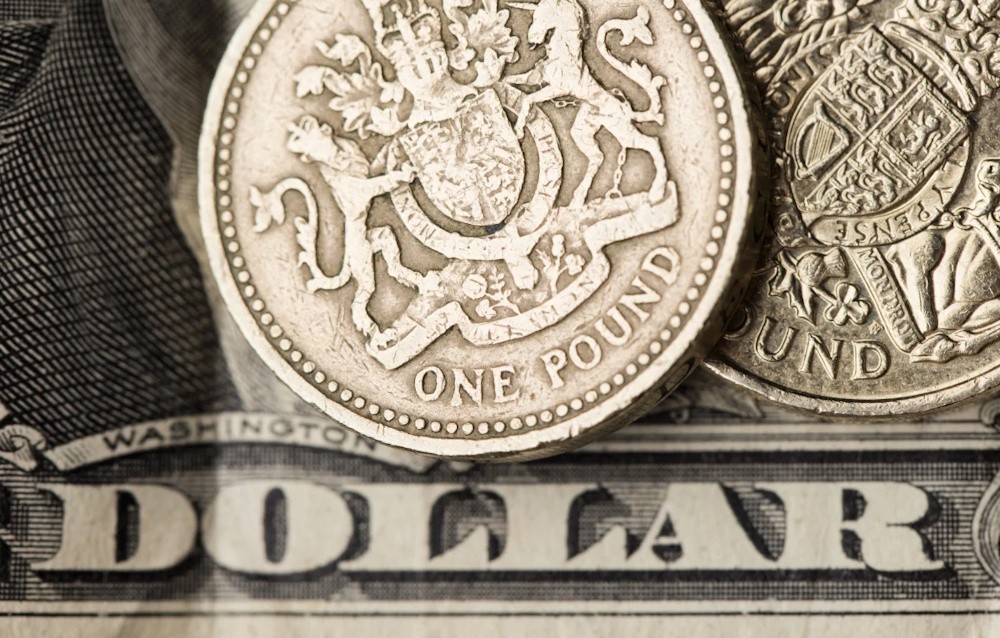The GBP/USD moving closer to 1.3450 after bouncing back from Tuesday’s low of 1.3250. The decision follows as investors assess the implications of softer U.S. growth indicators in light of the U.K.’s delicate economic situation. The pair has now recorded three straight days of gains, receiving technical support from a declining U.S. Dollar Index , which fell to 98.10—its lowest level in three months—due to dovish comments from Federal Reserve officials and the continuing U.S. government shutdown. The Federal Reserve’s Beige Book highlighted a deceleration in the U.S. economy, indicating a decline in consumer spending and an increase in layoffs. Christopher Waller and Stephen Miran both suggested the possibility of additional rate cuts in future meetings, boosting market expectations for at least two 25-basis-point reductions by December. The shift towards a more accommodative monetary policy has significantly devalued the Greenback, which is now experiencing its fourth consecutive day of losses. The 16-day federal shutdown has heightened uncertainty, postponing essential data releases and obscuring the Fed’s short-term perspective. Market participants are currently assigning a nearly 100% likelihood of an additional rate cut at the upcoming FOMC meeting.
Although Sterling’s recovery has been significant, its progress is hindered by local challenges. The U.K. GDP growth for August registered a modest 0.1%, with July’s figure adjusted downward to -0.1%, indicating a halt in output expansion. Recent employment data has shown an increase in joblessness, strengthening the belief that the Bank of England will maintain its slow approach to rate cuts through 2026. Market participants are currently divided on the likelihood of the BoE reducing rates again ahead of the Autumn Budget in November, given the significant fiscal challenges and persistently high borrowing costs. In light of these pressures, the Pound has remained resilient, buoyed by the Dollar’s weakness, consistently trading above the 20- and 50-day moving averages since midweek. The pair has regained the 100-period SMA on the four-hour chart and surpassed the descending trendline that had limited upward movement since early September. Oscillators indicate strengthening momentum, with the RSI at 63—remaining below overbought levels—suggesting potential for moderate continuation. A clear breakout above 1.3485, which represents the 50% Fibonacci retracement of the recent downtrend, may pave the way for a movement towards 1.3550. Immediate support is at 1.3400, then 1.3350, and finally 1.3300. Inability to protect these areas may lead the pair to revisit the 1.3250 low. Short-term momentum continues to show a bullish trend as long as price action stays above 1.3380.
In addition to the technical setup, the sentiment surrounding the Pound continues to be delicate. The U.K. is navigating a difficult fiscal landscape, as debt-to-GDP ratios surpass 100%. The government is gearing up for its Autumn Budget, tasked with the dual challenge of fostering growth while maintaining fiscal responsibility. Meanwhile, trade tensions between the U.S. and China are escalating once more as Washington has threatened tariffs on rare earth exports, which is negatively impacting global risk sentiment. The interplay of geopolitical tensions and a deadlock in Washington has led to a general decline in the Dollar, yet investors are still wary of diving into risk assets, which constrains the Pound’s potential for appreciation.
Considering the dynamics of a dovish Fed alongside a data-restricted BoE, GBP/USD seems set to fluctuate within a 1.3350–1.3550 range in the near term, with a possible upward move to 1.3600 should U.S. data keep declining. A sustained break above 1.35 could initiate a new upward trend toward 1.3680, bolstered by declining U.S. yields and reduced Treasury returns. On the other hand, a resurgence of fiscal pessimism in the U.K. or an increase in the Dollar Index above 99 might pull the pair down to 1.33. At current levels, the risk-reward profile suggests a prudent approach to accumulation, positioning the Pound as a short-term buy against the Dollar, provided it maintains support above 1.3380 and U.S. monetary policy continues to lean towards easing.

